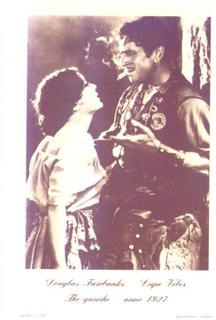Tetro
Francis Ford Coppola described his movie Tetro (2009) as symbol of reinvention for his now more personal narratives (autobiographical in some respects) and opposing to the Hollywood mold that “makes the same movie over and over again”. “I view this as the second movie of my second career” Coppola commented about Tetro and the first of his 2000s’ movies “Youth Without Youth”. Both movies very different to the ones that made him famous like The Godfather trilogy, but in which cinematographic images of colourful but confusing memories, dreams, and traumas typical of Freudian psychoanalysis persevere. Following this new wave in Coppola’s work (but maintaining some of the recurrent themes of previous productions: black-and-white films, family dramas, and Italia American influences), Tetro comes with a plot about a truth that is being repressed.
And what better way to give a new face to the plot than to take it to a place like Latin America. Presented at first in black and white, the movie starts with the arrival of Bennie Tetrocini (Alden Ehrenreich) to La Boca neighbourhood in Buenos Aires looking for his older brother Angelo (Vicente Gallo), an unsuccessful novelist who now is known under the name of Tetro. Bennie wants to understand why Tetro moved to Argentina and why he hides his past. To unveil Tetro’s mystery, Bennie reads and completes an unfinished novel written by Tetro and that seems to be based on his life. This codified text allows every character to remember fractions of Tetro’s traumatic experiences like the death of his mother, and the treason of his first love with his father the opera conductor Carlos Tetrocini (whose fame always overshadowed Tetro). This text triggers flashbacks, but it also influences the creation of dreams and stories for a play that are the only colourful parts of the movie.
Convinced that his bother’s dark personality is explained by the traumatic stories of the novel (and aware of the potential of the material) Bennie decides to publish the novel to help his bother overcome the past, and produces a play using his brother name, Tetro. However, the cure ends up being worse than the disease. Like in psychoanalysis itself, interpretations might be relative to those trying to materialize what is in the mind. Even though dreams and memories are fragments of a truth, they are still a fantasy representation that projects something else, and in this case, it is also the repression of Bennie’s own memories.
Tetro means many things. It is the apocope of the surname Tetrocini. Tetro is also the new name that Angelo Tetrocini has decided to use in Argentina to start a new life. "Angelo no longer exists, I am Tetro" the protagonist exclaims, referring to Tetro as a totally new person, with no past (although in reality he is hiding one that torments him). But Tetro is also an artistic name. It represents the ambivalence of the family drama that is recurrent in Coppola's films. This ambivalence is also part of the family trauma that makes us see several flashbacks and surreal mental representations (quite expressive and colorful moments) are characteristics of neo-noir cinema. But despite the color scenes, most of the video is true to the black and white of the classic noir.
In this movie, the way in which Argentina is portrayed contributes a lot to the family drama of the plot and to the style of the movie. The streets of La Boca neighbourhood are surrounded by a bohemian life environment: people going out all the time, enjoying street art and open sexuality, and meeting at nightclubs to present their new creations. Music, theater, literature and the importance of art as a whole in Tetro’s life help to build a plot charged with emotions and mystery. Those same elements maintain the noir genre though it is adapted to new audiences and times, as the New York Times called it: “Family Dynamics, Without Bullets”.
Labels: argentina, color, expressivity







